I’d been thinking about this for a while, but it came back to the top of the queue recently when I saw the beginning of an advertising blitz for the Avon Walk for Breast Cancer. Or, as I like to point out, the walk for a cure for breast cancer. But this isn’t one of those annoying grammar posts.
If you want to do something to help cure breast cancer, you can walk or you can support a walker, (for example, pick one of over 200 people raising money to fight breast cancer at firstgiving.com) or you can just send money or you can hold a bake sale, or you can buy pink stuff. I was in a store, I won’t say which one, in the kitchen area, and there was a section where everything was pink. Pink cupcake pans, pink knife sets, pink toasters, you get the idea. Wow, I thought, all these companies are giving money for breast cancer research and helping to publicize the issue! (Of course, it was inconceivable to me that you might want pink kitchenware unless there was a good charitable reason for it!)
Not so fast. Some of the stuff was just pink. No pink ribbon, no Susan G. Komen, no percent of profits for research. Three of these products have a notation that they’re giving to the cause, and three don’t.
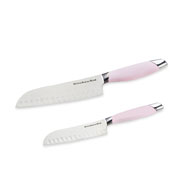
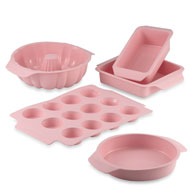
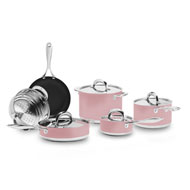
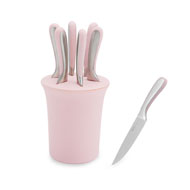
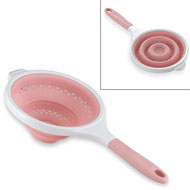
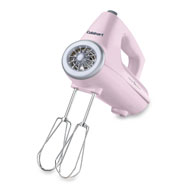
OK, that’s not entirely fair, since you can’t see the packaging, but I think it gets to the confusion that comes from stocking all the pink stuff together. *
What, if anything is wrong here, and who, if anyone is at fault? I think this might be the normal and necessary noise of a free market, but I have to at least suspect a few sketchy things might be happening. Perhaps some manufacturers are making pink stuff to cash in on the charitable aura without actually giving to the cause. Perhaps the people stocking the store are just being lazy, or maybe they’re in on some kind of conspiracy.
Even if every piece of pink merchandise in the world actually had a connection to the breast cancer cause, I’m not sure I would approve. The typical deal is something like 3-5% of profits donated. That’s profits, not the price of the item. 5% of a $50 mixer might be $2.50, but 5% of the profits on that sale is going to be a whole lot less, no more than a quarter, I’d wager. Sure, its more than nothing, and might come to a lot over thousands of purchases, but it should hardly make the choice for a rational consumer. Plus, if the pink item costs more than 3-5% more than the comparable non-pink one, the company could be making additional profits above and beyond those donated because of the charity, and that doesn’t seem right.
I’m not a big fan of the small but highly visible gestures, like wearing a ribbon or buying pink stuff. It’s true, these things help raise awareness, but I’m more interested in raising funds. If you’re buying small electric kitchen appliances of any color, you can afford to write a check for more than $2.50 for a cause you believe in. Buying the pink pancake griddle does not check “fight cancer” off your to-do list.
I encourage you to walk the walk any way you can.
* For those who must know, the santokus, the strainer and the mixer are donating to breast cancer research; the pans, pots and steak knives are just pink.

Trackbacks/Pingbacks